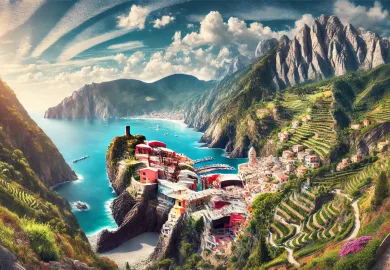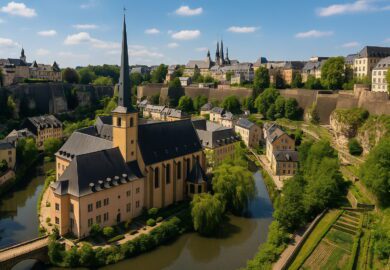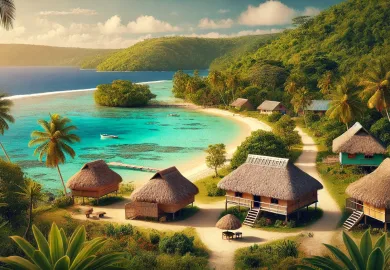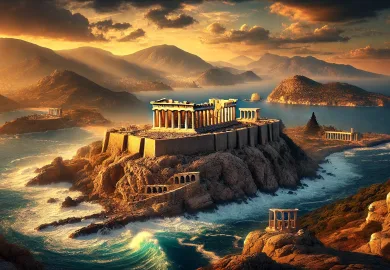
Czechia, also known as the Czech Republic, is a land rich with history, stunning landscapes, and vibrant culture. While the famous city of Prague and its iconic Charles Bridge attract millions of visitors each year, there is much more to Czechia beyond its well-trodden tourist paths. Hidden among its rolling hills, dense forests, and charming villages are secret treasures that offer a unique experience to travelers seeking the road less traveled. In this article, we’ll uncover some of the most unseen gems in Czechia, giving you a glimpse into a side of this country many have yet to explore.
The Enchanted Town of Telč: A UNESCO World Heritage Jewel
Tucked away in the southern part of Czechia, Telč is often overlooked by visitors in favor of more prominent destinations. However, this town, with its fairy-tale-like atmosphere, offers an experience unlike any other. The town square, known as Zachariáš of Hradec Square, is a meticulously preserved collection of Renaissance and Baroque-style houses, each painted in vibrant colors and adorned with intricate details.
Wander through the square, and you’ll feel as though you’ve stepped back in time. This town was once a major hub during the Renaissance, and today, its charm remains intact, making it one of the most unexplored gems in Czechia. Telč’s serene atmosphere, combined with the beauty of its well-preserved architecture, makes it a must-see for any traveler looking to dive deeper into Czechia’s history.
Beyond the square, Telč Castle awaits, offering visitors a journey through history with its elaborate rooms, galleries, and gardens. The town’s location, surrounded by beautiful lakes and peaceful forests, also provides ample opportunities for outdoor activities like cycling, hiking, and boating, making it a versatile and underrated destination.
Podyjí National Park: Untamed Wilderness Along the Dyje River
For nature lovers, Podyjí National Park is an untouched wilderness that offers a striking contrast to the more urbanized parts of Czechia. Situated along the Austrian border and encompassing the dramatic Dyje River valley, this unseen natural gem is one of the most biologically diverse areas in the country. Unlike the more famous Bohemian Switzerland park, Podyjí remains a lesser-known treasure that is free from large tourist crowds, making it perfect for those seeking tranquility and nature in its purest form.
The park is a haven for wildlife, including rare species of birds, butterflies, and reptiles. Visitors can embark on a series of hiking trails that meander through dense forests, rugged cliffs, and scenic vineyards. The Hardegg Castle, perched dramatically above the Dyje River, offers breathtaking views of the surrounding landscape and is another hidden highlight of the park.
One of the key attractions in Podyjí is the river itself, which flows peacefully through the valleys, creating idyllic spots for picnics and moments of quiet reflection. Whether you’re an avid hiker or simply someone who appreciates natural beauty, Podyjí is a hidden gem that will leave you feeling rejuvenated and connected to nature.
The Mysterious Gothic Ruins of Trosky Castle
In the heart of Czechia’s Bohemian Paradise region lies the intriguing ruins of Trosky Castle, an ancient fortress that has stood watch over the countryside for centuries. What makes Trosky unique is its dramatic location atop two volcanic basalt peaks, giving the castle an almost mythical presence. Built in the late 14th century, the castle’s two towers, known as Baba (the crone) and Panna (the maiden), rise like sentinels over the surrounding landscape.
Trosky Castle offers a fascinating glimpse into Czech medieval history, but what truly sets it apart is its surreal appearance. The towers’ jagged outlines against the sky evoke a sense of mystery and wonder, making this one of Czechia’s most hidden historical gems. Visitors can hike up to the castle ruins and explore the crumbling walls, while also enjoying panoramic views of the surrounding Bohemian countryside.
For those intrigued by local legends, Trosky Castle is said to be haunted, with stories of secret underground passages and treasure buried deep within the mountain. Whether you’re a history buff, a nature lover, or someone in search of eerie folklore, Trosky Castle offers a one-of-a-kind experience that transports you to another time.
Kroměříž: The Garden City of Moravia
When you think of majestic gardens in Europe, places like Versailles or Schönbrunn may come to mind, but Kroměříž in the Moravian region of Czechia is a hidden gem that deserves to be on any list of must-see gardens. The town is known for its Kroměříž Archbishop’s Palace and its surrounding gardens, which have earned a place on the UNESCO World Heritage list. The palace itself is a stunning example of Baroque architecture, with grand halls, frescoed ceilings, and ornate detailing throughout.
However, it’s the Flower Garden and the Podzámecká Garden that make Kroměříž a truly special destination. The Flower Garden, designed in the late 17th century, is a masterpiece of landscape design, with geometrically arranged flower beds, fountains, and statuary that transport visitors to a different era. Meanwhile, the Podzámecká Garden offers a more naturalistic landscape with meandering paths, ponds, and an impressive collection of rare trees.
Kroměříž’s tranquil gardens and palatial architecture make it a peaceful retreat for travelers seeking beauty and calm. It’s a perfect destination for a leisurely stroll, a romantic getaway, or an immersive dive into the grandeur of Moravian history. Despite its splendor, Kroměříž remains largely off the beaten path, making it an underrated gem waiting to be discovered.
Conclusion: Discover the Unseen Side of Czechia
While Prague may be the star attraction of Czechia, the country is brimming with lesser-known destinations that offer their own unique charm. From the fairy-tale town of Telč to the mysterious ruins of Trosky Castle, these hidden gems provide a richer, more intimate experience of the Czech Republic. Whether you’re an adventurer, a history enthusiast, or someone seeking peace and tranquility in nature, there’s something for everyone among Czechia’s unseen treasures.
By venturing off the well-beaten tourist track, you’ll uncover a side of this country that few travelers ever see, gaining deeper insights into its history, culture, and natural beauty. So pack your bags and get ready to explore the unseen gems in Czechia—your next adventure awaits!








